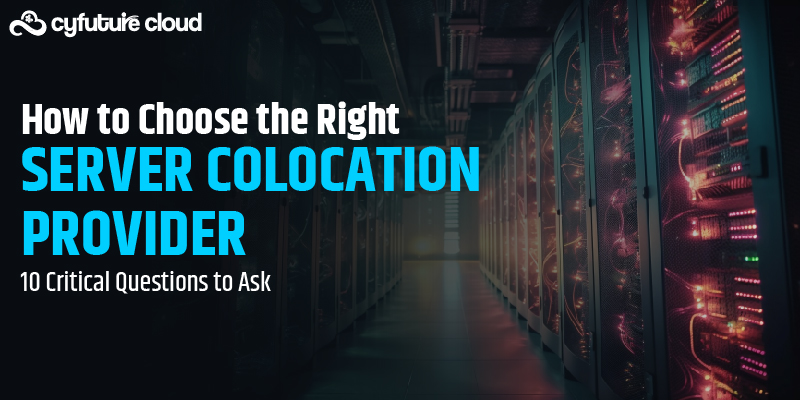Table of Contents
Never before have customers had higher expectations. Nearly every software created nowadays is expected to include new features every so often to keep up with the end-users increasing expectations. You can frequently deliver if you test frequently. This implies that you may often improve your items if you can collect client input. Your operational/ developmental flexibility and competitiveness are intimately related. Competitiveness is crucial for corporate success and is a result of a variety of elements, including how smoothly and adaptably the company’s IT operations and development are.
In today’s rapidly evolving digital landscape, customer expectations are higher than ever before. The demand for software that continuously incorporates new features to meet the increasing expectations of end-users is relentless. The ability to deliver frequent updates and improvements relies heavily on collecting customer feedback. Operational and developmental flexibility is directly linked to competitiveness, which is a crucial factor for corporate success. Therefore, creating an efficient, high-performing, secure, and cost-effective IT environment is essential.
However, despite the availability of modern technology, many businesses still rely on outdated legacy systems. These legacy systems, although burdensome, cannot be eliminated because they are integral to the company’s operations. The cloud presents itself as a solution for contemporary computing due to its simplicity, scalability, and remote accessibility.
Why move from legacy to Cloud?
Enterprises face numerous challenges due to legacy hardware and software, including high maintenance costs, limited support, and poor upgradeability. Addressing data storage requirements by migrating older applications to the cloud can alleviate some of these concerns. Any modern-day company aspires to be agile, adaptable, up-to-date, and responsive to market needs. Cloud migration enables companies to achieve these goals and gain the desired independence. Reasons to move from legacy to the cloud:
- Limited scalability in scope
Limited scalability in scope refers to the inability of legacy systems to effectively handle growth and adapt to changing business needs. Legacy systems often lack the flexibility and scalability required to accommodate increasing data volumes and user demands. As a result, organizations may struggle to expand their operations or introduce new features without significant challenges and limitations.
- Integration of complex data between legacy systems or between a legacy system and a contemporary system
Integration of complex data between legacy systems or between a legacy system and a contemporary system can be a complex and time-consuming process. Legacy systems often use outdated technologies and proprietary formats that are incompatible with modern data integration standards. This poses a significant challenge when organizations need to integrate data from multiple sources or migrate data from legacy systems to the cloud. It requires careful planning, mapping, and transformation of data to ensure a smooth transition and seamless integration.
- Updating each outdated system’s hardware and software takes time
Updating each outdated system’s hardware and software takes time and effort. Legacy systems typically run on outdated infrastructure and software versions, making it challenging to keep up with the latest advancements. Upgrading these systems involves extensive testing, configuration, and potential disruption to ongoing operations. It requires careful coordination and planning to minimize downtime and ensure a successful transition to modern hardware and software platforms.
- Higher expenditures for operations and security
Higher expenditures for operations and security are common drawbacks of legacy systems. Maintaining and operating legacy systems often requires specialized knowledge and resources, which can be costly. Legacy systems may have higher maintenance costs, require frequent security patches, and have limited support from vendors. Organizations may need to allocate significant financial resources to ensure the ongoing operation, stability, and security of these systems.
- Limited bandwidth and storage for their initiatives
Limited bandwidth and storage present significant challenges for organizations relying on legacy systems. Legacy systems often have limited network bandwidth and storage capacity, which can hinder data-intensive operations and the implementation of new initiatives. As businesses generate and collect increasing amounts of data, legacy systems may struggle to handle the growing storage demands. Limited bandwidth can also result in slower data transfers, impacting overall system performance and user experience.
When is the right time for the Move?
To meet the expectations of future clients, digital companies will be expected to offer everything as a service. Businesses still relying on antiquated systems may struggle to survive. Legacy systems hinder platform performance and technology integrations, making it difficult to keep up with evolving market demands.
Aged IT systems
While legacy systems may be effective at performing their part, they are always vulnerable to breakdowns. Many systems’ decades-old IT infrastructure may be to blame for restricting business growth.
Hidden costs
Even though outdated IT systems may appear straightforward, keeping and maintaining them come with a lot of hidden expenses. Based on a study by Forbes, businesses spend 80% of their budget on operations and maintenance because they discovered issues with efficiency, cybersecurity, and mission risk.
Hinder Innovation
While your legacy systems come in the way of innovating at will in meeting the business demands, re-evaluating business strategies becomes imperative. Businesses that have been digital failures do not appear to live very long. It is thought that cloud computing would increase competitive advantage and innovation potential. We have also seen that many businesses are expressing interest in moving to the public cloud during the past few years.
How to Make the Move from legacy to Cloud?
Learn how to seamlessly transition from legacy systems to the cloud with our comprehensive guide. Discover the benefits of cloud computing, plan your migration strategy, and navigate potential challenges. Streamline operations, increase scalability, and unlock new possibilities with this essential resource for embracing the power of the cloud.
Analyze business objectives and goals
The reason for transferring old systems, their applications, or any component to cloud computing must be made explicit by the service consumer. They must identify and examine the company’s goals and objectives, as well as how the cloud migration project will assist them.
Before beginning or resetting a business model, it is also necessary to assess the features and needs of the data in order to exclude any possibility of data manipulation by other organizations.
Develop a migration strategy
The migration project should have defined objectives, rationale, scope, and restrictions when moving traditional systems to the Cloud. Most frequently, switching to a more cost-effective system is the primary driving force for migration. This lowers costs. Additionally, moving from outdated legacy systems to the Cloud introduce fresh, distinctive features that improve the operation of the system. This makes it simpler to adjust the system to the developing markets.
Recognize the Legacy System
This is the most significant process since it tackles every part of the legacy system, which is the existing system. This required having a thorough comprehension of all the material and details on how to incorporate various analytical components.
In essence, this process assists in identifying the key features that must be included in the migrated system.
Choose what components need to be migrated
This stage assists you in determining whether you need to transfer the complete, fully-fledged old system or only a certain application layer, database, function, or component. The configuration of the components or entire system to be transferred is retrieved after you have figured this out.
Move to the Cloud
Each cloud environment will have particular advantages and disadvantages. You must assess each opportunity and choose which one is most appropriate for your company’s situation. The goal you set in the previous phase comes in helpful at this point. A cloud environment’s strengths might include things like its cost, special development chances, uptime, customer support, feature compatibility, futureproofing, or even marketing potential.
Instead of focusing on short-term goals like keeping the process’ budget under control, firms can place more emphasis on their fundamental values and long-term objectives like end-user happiness. To make the best choice and to prevent any errors, you might require the assistance of an expert.
Make the imperative Move
Modernization of the infrastructure does not necessarily follow. Several business components are directly impacted by the cloud transformation strategy. Modernizing legacy systems and solving cloud transformation issues require optimization as a fundamental component.
Customized and internally designed programs might be difficult and time-consuming to move from a legacy system to the Cloud. The change over time could have a slight effect on how well your firm performs. ESDS offers the most ingenious products and solutions customized to your business needs, ticking all the parameters, be it anything like price, unique development opportunities, uptime, customer support, compatibility features, future proof, or even marketing potential.
Conclusion
Migrating from legacy systems to the cloud is crucial for businesses aiming to stay competitive and meet customer expectations. The cloud offers advantages such as scalability, enhanced performance, cost-effectiveness, and the ability to innovate. By following a strategic migration plan, analyzing business objectives, and carefully choosing the right cloud environment, organizations can unlock the full potential of the cloud. Embracing the power of the cloud will enable businesses to streamline operations, increase scalability, and explore new possibilities for growth and success in the digital era.
Recent Post
Send this to a friend

 Server
Colocation
Server
Colocation CDN
Network
CDN
Network Linux
Cloud Hosting
Linux
Cloud Hosting Kubernetes
Kubernetes Pricing
Calculator
Pricing
Calculator
 Power
Power
 Utilities
Utilities VMware
Private Cloud
VMware
Private Cloud VMware
on AWS
VMware
on AWS VMware
on Azure
VMware
on Azure Service
Level Agreement
Service
Level Agreement 



















